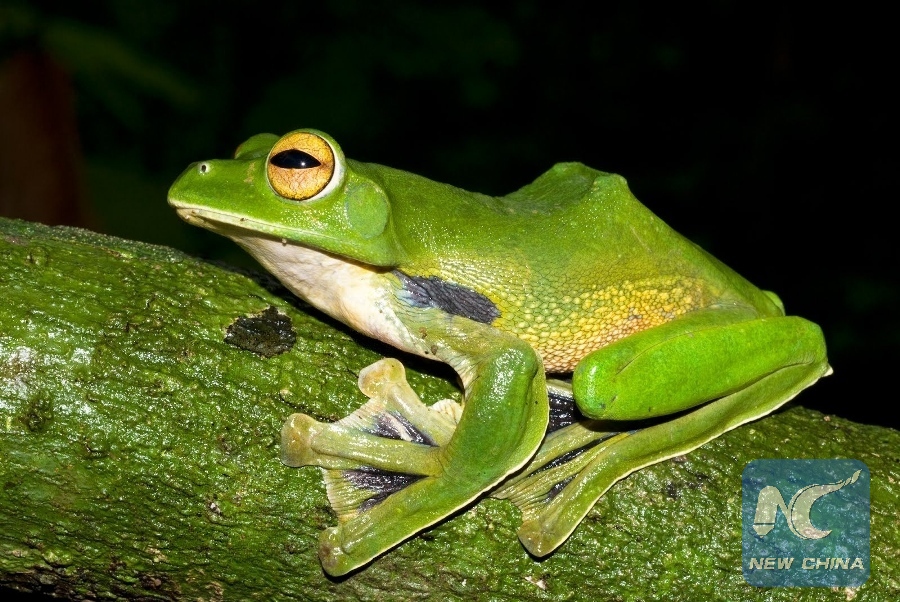
File Photo: The picture released by the World Wildlife Fund (WWF) shows a new species of Helen's Flying Frog in Vietnam. (Xinhua)
WASHINGTON, May 10 (Xinhua) -- A deadly fungus responsible for the devastation of amphibian populations around the world may have originated in East Asia, according to a new research published on Thursday in the journal Science.
Chytrid fungus has long been identified as a cause of the decline and extinction of species of frogs, toads, newts and other amphibians across several continents.
Researchers at Imperial College London suggested the killer fungus currently ravaging global amphibian populations originated in East Asia, highlighting the need to tighten biosecurity across borders, including a potential ban on trade in amphibians as pets to ensure the survival of vulnerable species.
The fungus causes a disease called chytridiomycosis, which attacks the animal's skin, affecting their ability to regulate water and electrolyte levels and leading to heart failure.
In this study, the research team gathered samples of the pathogen from around the world and sequenced the genomes of these samples, combining the data with genomes from previous studies to make a collection of 234 samples.
They identified four main genetic lineages of the fungus, three of which are distributed globally. A fourth lineage was found only in Korea, on frogs native to the region.
Cultures from this Korean lineage were found to contain much more genetic diversity than any other lineage.
Further analysis of the Korean Chytrid fungus showed no history of global outbreaks within their genomes, suggesting the Korean Chytrid strains were native to the region, and most closely resemble the ancestor of all modern Chytrid fungus.
Their findings support the idea that rather than dating back thousands of years, as previously thought, the range of the disease expanded greatly between 50 and 120 years ago, coinciding with the rapid global expansion of intercontinental trade.

